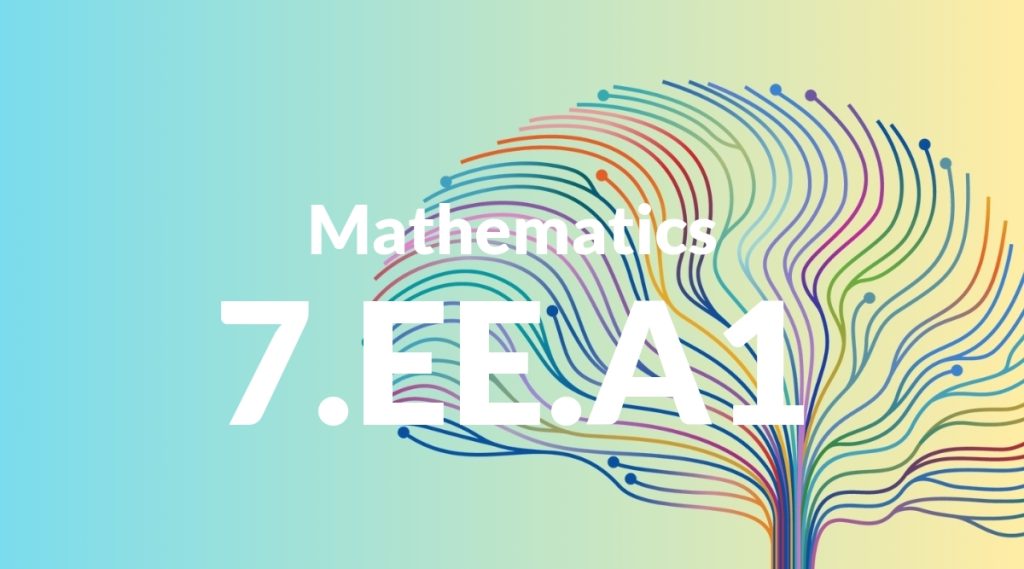Standard: 7.EE.A1 – Apply properties of operations as strategies to add, subtract, factor, and expand linear expressions with rational coefficients.
Grade level: Grade 7
Subject: Mathematics
Domain: Expressions & Equations
Teacher Overview
This standard focuses on applying properties of operations to manipulate linear expressions with rational coefficients. It is crucial for developing algebraic thinking and problem-solving skills, which are foundational for higher-level mathematics. Mastery of this standard will enable students to understand and solve more complex equations and real-world problems. Students need to have a firm grasp of arithmetic operations, the concept of variables, and basic algebraic expressions. They should also be familiar with properties of operations like distributive, associative, and commutative properties.
After mastering this standard, students will be able to solve more complex linear equations and inequalities. They will also apply these skills to real-world problems and advanced mathematical concepts, paving the way for success in higher-level mathematics.
Common Misconception 1
A common misconception is that the properties of operations do not apply to expressions with variables. This is incorrect because the properties are universal and apply to both numerical and algebraic expressions.
Intervention 1
To address this misconception, use concrete examples and visual aids to demonstrate how properties of operations apply to both types of expressions. Reinforce this with practice problems that gradually increase in complexity.
Common Misconception 2
Another misconception is confusing the process of factoring with expanding expressions. Factoring involves breaking down expressions into simpler components, while expanding involves distributing and combining like terms.
Intervention 2
Provide side-by-side comparisons of factoring and expanding processes. Use color-coding to highlight differences and offer plenty of practice problems to reinforce understanding.
Prerequisite Knowledge
Students should understand basic arithmetic operations, the concept of variables, and simple algebraic expressions. They should also be familiar with the properties of operations such as the distributive, associative, and commutative properties.
Subsequent Knowledge
Students will develop skills in solving more complex linear equations and inequalities, and will be able to apply these skills to real-world problems and advanced mathematical concepts.
Instructional Activities
- Create and solve real-world problems involving budgeting and financial planning.
- Use travel scenarios to calculate distances and costs using linear expressions.
- Design recipes that require mixing ingredients in specific ratios.
- Conduct simple experiments and use linear expressions to predict outcomes.




